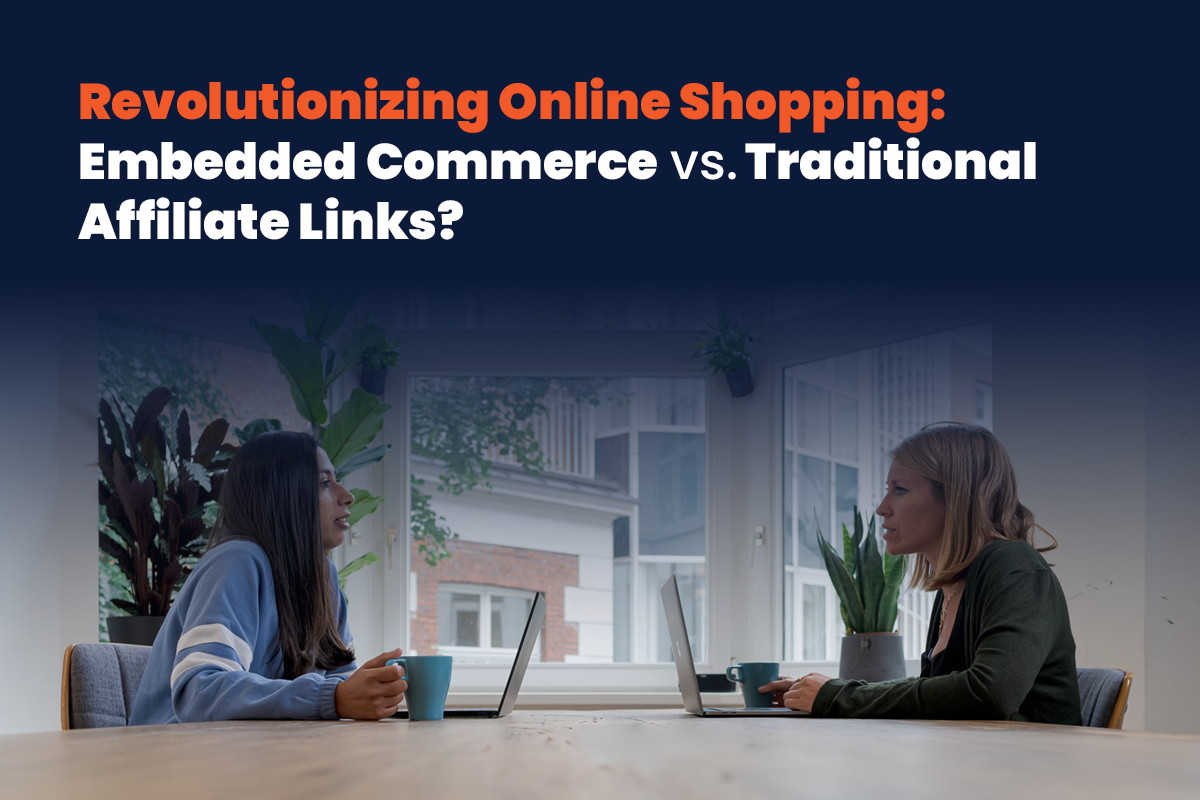Revolutionizing Online Shopping: Embedded Commerce vs. Traditional Affiliate Links
In the dynamic landscape of e-commerce, where convenience and speed reign supreme, the traditional model of affiliate marketing is undergoing a significant transformation. The rise of embedded commerce is reshaping how consumers interact with online shopping experiences, catering to evolving buying habits and preferences. Today, we delve into the realm of embedded commerce and explore its myriad benefits over traditional affiliate links, especially in light of changing consumer behavior and payment preferences.
The Evolution of Embedded Commerce
Embedded commerce represents a paradigm shift in online shopping by seamlessly integrating purchasing opportunities directly within digital content, such as articles, social media posts, or videos. Unlike traditional affiliate links that redirect users to external websites, embedded commerce enables frictionless transactions within the native environment, eliminating the need for multiple clicks and page transitions.
Embracing Instant Gratification
In an era characterized by instant gratification, consumers crave immediacy and simplicity in their purchasing journey. Embedded commerce fulfills this need by offering a streamlined checkout process, often facilitated by digital wallets that enable one-click payments. With the ability to make purchases without leaving the content they’re engaging with, consumers enjoy a seamless and uninterrupted shopping experience.
Catering to Changing Buying Habits
The way consumers shop has evolved dramatically, driven by factors such as mobile technology, social media influence, and shifting preferences for digital payments. Traditional affiliate links, while effective in driving traffic to external sites, introduce friction and disrupt the flow of content consumption. In contrast, embedded commerce aligns with the modern consumer’s desire for instant access to products and services, enhancing engagement and conversion rates.
The Power of Contextual Shopping
Embedded commerce thrives on contextual relevance, leveraging the content’s context to present relevant products or services to the consumer. By embedding purchase opportunities directly within the content, whether it’s a fashion blog showcasing the latest trends or a recipe video featuring kitchen gadgets, brands can capitalize on the consumer’s intent and seamlessly guide them towards making a purchase.
Unlocking New Revenue Streams
For content creators and publishers, embedded commerce opens up new avenues for monetization beyond traditional advertising and affiliate marketing. By integrating shoppable elements into their content, creators can earn commissions or revenue share from purchases made through embedded links, creating a symbiotic relationship between content creation and commerce.
Enhancing User Experience and Conversion Rates
One of the key advantages of embedded commerce is its ability to enhance the user experience by reducing friction and minimizing distractions. By keeping users within the native environment, embedded commerce increases the likelihood of conversions as it capitalizes on the consumer’s immediate interest and intent to purchase.
Conclusion
In a digital landscape where convenience, speed, and relevance are paramount, embedded commerce emerges as a game-changer in the realm of online shopping. By seamlessly integrating purchasing opportunities within digital content, embedded commerce caters to evolving consumer preferences, enabling frictionless transactions and unlocking new revenue streams for content creators and brands alike. As consumer buying habits continue to evolve, embracing embedded commerce represents a strategic move towards meeting the demands of today’s discerning and digitally-driven shoppers.
For a firsthand experience of embedded commerce in action, visit [ShopThru](https://shopthru.com/) and discover a seamless way to shop within your favorite digital content.




Leave a Reply
Want to join the discussion?Feel free to contribute!